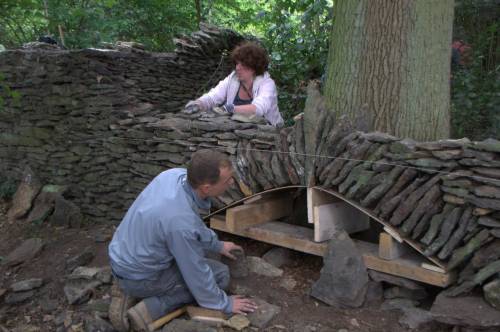Art of dry stone construction, knowledge and techniques
Croatia, Cyprus, France, Greece, Italy, Slovenia, Spain, Switzerland, Andorra, Austria, Belgium, Ireland and Luxembourg
Inscribed in 2024 (19.COM) on the Representative List of the Intangible Cultural Heritage of Humanity

The art of dry stone construction refers to the practice of building with stone without using binding material. Practised in various countries in Europe, it requires an innate understanding of geometry and physics, as well as skills to handle the raw materials used. Dry stone construction is achieved through the careful selection and arrangement of stones to ensure the long-term stability of the structure and its adaptation to the local terrain and climate. Structures include houses, bridges, piers, arches, tombs, sheds, paths, vaulted cellars, beehive huts, religious structures and fortifications. An inherently social practice, dry stone construction promotes social cohesion through collaboration and the transmission of the related techniques and knowledge to future generations. To the communities involved, dry stone structures are sources of pride and identifying factors given the structures’ distinct visual impact on local landscapes. By its very nature, the art of dry stone construction encourages dialogue as communities work together to build, maintain and restore structures of widely ranging sizes and weights. The practice also fosters mutual respect for cultural diversity through collaboration at local, regional, national and international levels, as practitioners from different regions and countries travel to work together and learn from each other.









